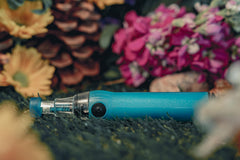How To Know If Your Blood Sugar Is Low

If you go to a doctor regularly, and you should, more than likely you have had your blood tested for sugar levels. A high blood sugar or glucose level can be an indicator for the onset of prediabetes or diabetes. Too much sugar for anyone of any age can be dangerous. But what if you have low blood glucose levels or hypoglycemia? Whether you have diabetes or not low blood sugar levels can be detrimental, if not dangerous to your health. We’ll explore what low blood sugar means, how it can happen, and how to prevent it.
What Is Blood Sugar?
The term blood sugar, or blood glucose, gets tossed around like we all understand what it is. For newly diagnosed diabetics or people who have not had to give much thought to blood sugar or glucose levels, the terms can be a bit confusing. Glucose comes from the carbohydrates you eat and it provides energy for your body and nutrients to your organs, muscles, and nervous system. In other words, you could not survive with zero sugar in your blood.
After you eat, your pancreas produces the hormone insulin that sends any extra sugars to your liver in the form of glycogen. The pancreas can also produce the hormone glucagon which can raise blood glucose levels by signaling the liver to turn the glycogen back into glucose and send it back to the bloodstream. These two hormones in the pancreas work in tandem to keep blood sugar levels stable.
According to the Centers for Disease Control, a normal fasting blood sugar level is 99 mg/dl or lower. The figure is based on fasting, or well after or before you eat, because food temporarily boosts blood sugar and it takes from 1 to 2 hours for blood sugar levels to return to normal. Blood sugar levels are usually lowest in the morning, before the first meal of the day, and rise for an hour or two after you eat.
Is Your Blood Sugar Low?
 Diabetics regularly test their blood sugar and use medication or food choices to keep blood glucose at optimal ranges. However, with a body that doesn’t regulate blood sugar efficiently, there is as much risk of high blood sugar as low blood sugar also known as hypoglycemia. The early signs of low blood sugar come from the body’s stress hormones which kick into gear causing sweating and shakiness to warn the body that something is not right. When blood sugar levels remain low or drop further the symptoms become more serious and threatening, impacting brain function and eventually starving the brain if not remedied. When boosts of glucose from three treatments (such as a snack or glucose tablet) don’t improve symptoms, call 911. Talk to your friends, co-workers, teachers, and caregivers about recognizing the symptoms, and also knowing when to call for help.
Diabetics regularly test their blood sugar and use medication or food choices to keep blood glucose at optimal ranges. However, with a body that doesn’t regulate blood sugar efficiently, there is as much risk of high blood sugar as low blood sugar also known as hypoglycemia. The early signs of low blood sugar come from the body’s stress hormones which kick into gear causing sweating and shakiness to warn the body that something is not right. When blood sugar levels remain low or drop further the symptoms become more serious and threatening, impacting brain function and eventually starving the brain if not remedied. When boosts of glucose from three treatments (such as a snack or glucose tablet) don’t improve symptoms, call 911. Talk to your friends, co-workers, teachers, and caregivers about recognizing the symptoms, and also knowing when to call for help.
The symptoms of hypoglycemia vary by individual and by just how low your blood sugar becomes. When your blood sugar level is low the possible symptoms vary depending on just how low levels drop and can include:
Sugar level drops below 70 mg/dl
- Sweating
- Nervousness, shakiness, weakness
- Extreme hunger
- Dizziness
- Headache
- Blurred vision
- Quickened heartbeat accompanied by feeling anxious
Sugar level drops below 40 mg/dl
- Confusion and irritability
- Slurred speech
- Muscle twitches
- Inability to concentrate
- Unsteady when walking or standing
- Personality change like sudden anger or crying
Sugar level drops below 20 mg/dl
- Seizure
- Loss of consciousness
- Stroke
- Death
Symptoms of low blood sugar during sleep vary a bit and can include:
- Restlessness
- Nightmares
- Sleepwalking
- Making unusual noises
- Falling out of bed
- A headache upon awakening
Dangers of Low Blood Sugar
These signs and symptoms that appear when your blood sugar is low can be fairly obvious and recognizable for those with diabetes and for those who care for someone with diabetes. However, there are diabetics who may not experience any sign of low blood sugar which is known as hypoglycemia unawareness. This is generally a problem for those who have had type 1 or type 2 diabetes for a long time and who have several instances of low blood sugar every week. The danger is that the first sign of low blood sugar may be confusion followed by unconsciousness leaving little time for action to counteract the blood glucose drop. Wearing a medical ID, and alerting those you spend time with of your condition, is critical, as is talking to your doctor about what emergency medical supplies you might need to carry with you.
The symptoms listed give you a vision of the various dangers of low blood sugar in diabetics, but low blood sugar does not have to mean you are diabetic, although it is fairly uncommon in those without diabetes. Disorders or diseases of the kidneys, liver, pancreas, and adrenal glands can cause low blood sugar as can excessive alcohol consumption that interferes with the liver’s ability to store glucose. Any time you believe you have symptoms of low blood sugar, contact your doctor immediately.
Maintaining Ideal Glucose Levels
Outside of recognizing the symptoms of low blood sugar, the best way to keep glucose levels optimal is through regular blood testing. You and your doctor can determine the best schedule for testing to meet your needs. To help encourage a habit of testing, making it as painless and simple as possible goes a long way. Genteel’s Lancing Device is ideal for this purpose as it offers pain-free but accurate testing that can be done on different areas of the body so fingers don’t become over stabbed and sore.
 There are diabetes medications that can be taken to maintain glucose levels. People with type 1 diabetes cannot produce insulin and therefore regularly take insulin injections or wear insulin pumps. For those with type 2 diabetes, there are a variety of medicines that work with the body in different ways to help it process glucose and produce or better manage insulin. Your doctor can help you determine if diabetes medicine is right for you.
There are diabetes medications that can be taken to maintain glucose levels. People with type 1 diabetes cannot produce insulin and therefore regularly take insulin injections or wear insulin pumps. For those with type 2 diabetes, there are a variety of medicines that work with the body in different ways to help it process glucose and produce or better manage insulin. Your doctor can help you determine if diabetes medicine is right for you.
Outside of medicine, diet and choosing healthy foods can also help in stabilizing blood sugar. Adopting a diet for diabetics that is low in sugar and features vegetables, fruits, and whole grains can keep glucose levels in check. Eating at regular times and controlling food portions is also important. Regular exercise can also help your body better process sugar, just be sure to check your blood before, during, and after physical activity as exercise draws on your sugar reserves to fuel muscles.
Being prepared for high or low sugar levels no matter where you go or what you do is also a key to staying healthy. The Genteel Organizer Pouch can help as it has plenty of room for a lancing device, lancets, wipes, test strips, and even hard candies, glucose tablets, or gels that can be a quick solution to get blood sugar levels back where they should be.
Low blood sugar does not have to be something to fear, but it is a condition to be familiar with and monitor for. By taking the proper steps to maintain blood sugar levels there’s no stopping you from doing whatever it is you love to do.





